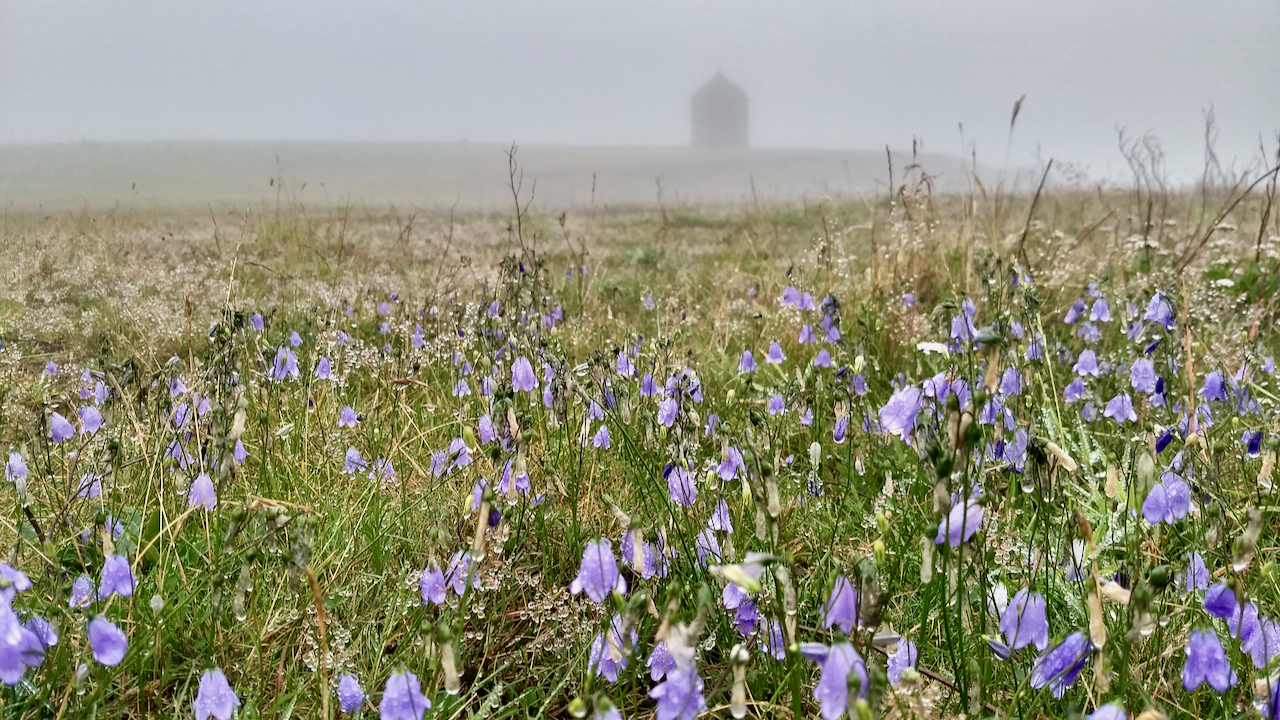No garden cultured flower e’er seems to me
More graceful than the Harebell growing wild.
It help’d to form my posy when a child,
And I now love to gather it to be
Part of a grandchild’s; for I would fain to teach
The love of flowers to all. With fancy free,
One may imagine fairy minstrelsy
Chiming from those frail bells: to all and each
They seem to ring out in the willing ear
Death to all evil, long life to all good;
That we have need of more than clothes and food
To truly live; and ev’ry passing year
Should find our love of beauty wax more strong;
And our whole lives should be sweet as a poet’s song.
George Markham Tweddell
I seem to have posted a lot of Victorian verse lately. But George Markham Tweddell was a local poet from Stokesley so he might have even seen the very ancestors of these Harebells on the slopes of Roseberry Topping.
Not sure he would have laid on the wet grass though. Another wet drizzly day with low stratus. Photo subjects have to be found close to the ground. The blue in sharp contrast to the greyness.
Harebells look delicate but are in reality tough flowers with a preference for dry grasslands.
In Scotland, it is known as the Bluebell, hence elsewhere as the Scottish Bluebell. Other folk names are Cuckoo’s shoe, Witch bells, Heathbell, Thimbles, Blaver or Blowort, and Old man’s bell.
In Celtic mythology, the Harebells was thought of as a fairy plant that was picked at your peril. But someone must have picked them for in traditional medicine, Harebells were used to treat soreness of the ears and eyes.

Leave a Reply